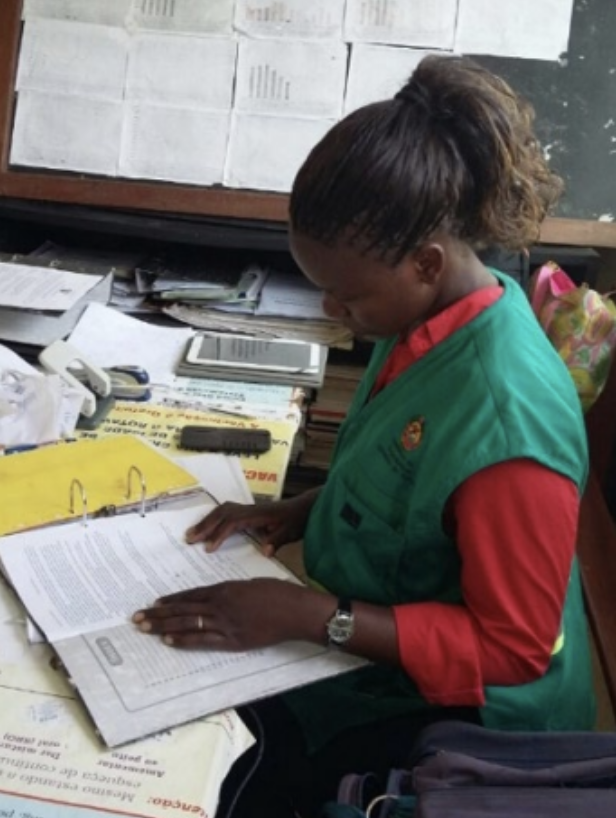By: Elizabeth Davlantes, Humberto Rodrigues, and Rose Zulliger
CHWs in Mozambique are equipped with a range of skills to provide integrated community case management for Mozambicans. Following an 18-week training period, each CHW provides care for as many as 2,000 inhabitants in communities situated up to 25 kilometers from health facilities. In response to exceptional program accomplishments, the Mozambican government adopted the goal of increasing local CHW training and deployment by 2021.
Background
Mozambique’s cadre of CHWs, called Agentes Polivalentes Elementares (APEs), was established in 1978. APEs originally provided first aid, health promotion, preventive medicine services, and health post referrals. In 2010, the national APE Program was revitalized and the APE role was expanded to include integrated community case management (iCCM) of childhood pneumonia, diarrhea, and malaria.
Implementation
APEs are each responsible for 500–2,000 inhabitants. They are members of the communities they serve and are generally located in hard-to-reach areas that are 8 to 25 kilometers from health facilities. All APE services and treatments are provided free of charge in the community. Today, there are more than 5,300 APEs working in Mozambique, and the country is currently scaling up the program with the goal of having 8,800 trained APEs providing community-based services by the end of 2021.
Roles/responsibilities
APEs perform preventive education and health promotion in their communities. Each APE is given a general medical kit and a malaria-specific commodity kit that contain basic diagnostic and therapeutic equipment for managing common diseases. APEs are trained to recognize signs of severe disease and refer such patients to the nearest health facility.
Training
APEs undergo 18 weeks of training in health promotion, disease prevention, first aid, and management of common diseases. Training is divided into didactic and practical modules.
Supervision
A staff member at the nearest health facility supervises all APEs in the facility’s catchment area. Supervisors meet with APEs on a monthly basis to review register books and distribute new commodity kits. They also make periodic supervisory visits to APEs in their communities.
Incentives
APEs receive a small subsidy. In addition, they receive a bicycle, flashlight, vest, medicine bag, identification badge, hat, calculator, thermometer, and stopwatch.
Impact
APEs provide lower-cost services to hard-to-reach areas than were previously available at the time of the APE Program relaunch in 2010. Since that time, they have expanded access to critical health services such as providing testing and treatment for 1 million cases of malaria in 2018.
Read more
Health for the People: National Community Health Worker Programs from Afghanistan to Zimbabwe


Leave a Reply